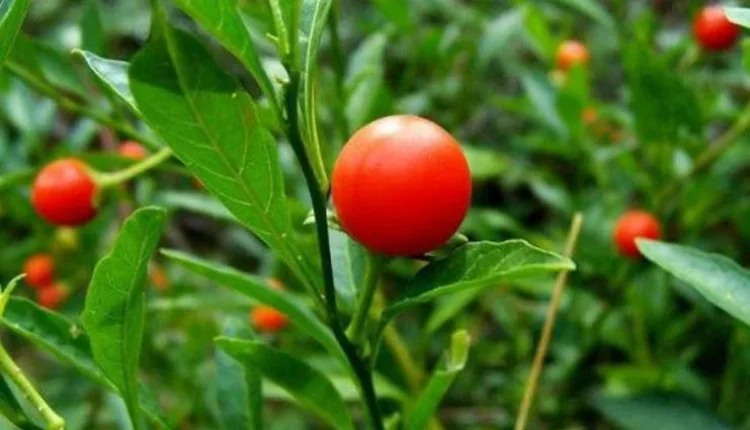A Comprehensive Guide to Ashwagandha Farming in India
Indian ginseng is another name for ashwagandha. In recent years, it has become a prominent crop in India. This ancient medicinal plant has been deeply rooted in Ayurveda. Ashwagandha farming has become popular and has a profitable scope among farmers and the agriculture sector in India.
Find out more about ashwagandha farming, including its historical significance and its usefulness in practical applications. We’ll also discuss how modern agricultural machinery, like Farmtrac Tractors India and Swaraj 744 XM, can optimise the cultivation of ashwagandha.
Historical Significance of Ashwagandha
Ashwagandha, scientifically named Withania somnifera, has been a part of Ayurvedic medicine for 1,500 years. It’s known for its healing powers, helping the immune system and reducing stress. In India, it’s often called Indian ginseng and is valued for its ability to adapt to the body’s needs.
Factors responsible For Ashwagandha cultivation:
Soil Requirements and Agro-weather Conditions
Ashwagandha, being a hardy and drought-tolerant plant, finds its best footing in well-drained mild red soil or sandy loam. The soil’s pH level between 7.5 and 8, coupled with good drainage properties, sets the stage for optimal cultivation. This medicinal herb is highly tolerant of temperatures ranging between 20-38 degrees Celsius, making it well-suited for the diverse climates across India.
Land Preparation
Successful Ashwagandha farming begins with meticulous land preparation. Ploughing or harrowing is essential to achieve fine tilth, ensuring the soil is loose and deep. The incorporation of well-decomposed organic matter, particularly farmyard manure, contributes to soil fertility. This step lays the foundation for robust plant growth.
Sowing and Planting
The process of sowing Ashwagandha seeds involves a carefully crafted mixture of soil, peat moss, and vermicompost. This blend provides the necessary nutrients for germination. The seeds are sown at a depth of 1-3 cm, and the recommended time for sowing is between June to July. With a seed rate of 10-12 kg per hectare and line sowing methodology, farmers can enhance root production and facilitate efficient intercultural tasks.
Fertiliser and Manure
Organic methods take centre stage in Ashwagandha farming, with mulching, composting, and bio-fertilisers playing crucial roles. The judicious use of organic manure, including farmyard manure, green manure, and vermicompost, fosters the growth of quality herbs. A balanced combination of N:P: K (Nitrogen: Phosphorus: Potassium) in specific quantities per hectare ensures high-quality yield without the need for excessive chemical fertilisers.
Irrigation Requirements
While Ashwagandha is primarily a rain-fed crop, regulated irrigation systems may be employed for cultivated crops. The crop’s aversion to excess moisture underscores the importance of well-managed irrigation. The first irrigation occurs 30-35 days after germination, followed by a second round after 60-70 days. Strategic use of organic mulches aids in water infiltration, soil moisture conservation, and weed control.
Harvesting and Post-Harvesting
After 150-180 days, when the leaves dry and the berries take on a red or orange hue, Ashwagandha is ready for harvest. Power tillers or ploughs are employed to uproot the entire plant delicately.
During this stage, delicate care is crucial to minimize damage, especially when using reliable equipment like Farmtrac tractors India and Swaraj 744 XM. The harvesting process concludes with the careful separation of roots and berries. Post-harvesting activities include grading the roots and gathering them in tin containers, ready for commercial trading and market distribution.
Challenges and Solutions
While Ashwagandha farming presents promising opportunities, it has challenges. Weeding and pest control are crucial aspects that demand attention. The implementation of Glyphosate and isoproturon aids in weed control.
Regular monitoring and the application of natural pesticides, such as Neem Astra, mitigate the impact of pests and diseases. Additionally, careful seed treatment, disease-free seeds, and the use of bio-pesticides contribute to a healthier crop.
Normal checking and the utilization of regular pesticides, like Neem Astra, moderate the effect of vermin and infections. Furthermore, cautious seed treatment, illness free seeds, and the utilization of bio-pesticides add to a better yield.
The Geographical Landscape of Ashwagandha Farming in India:
Ashwagandha has found conducive environments in several states across India, making it a geographically diverse crop. Leading states in Ashwagandha production include Rajasthan, Punjab, Haryana, Gujarat, Uttar Pradesh, Madhya Pradesh, and Maharashtra. The combination of ideal weather conditions, land resources, and agricultural expertise in these regions has positioned them as key players in the cultivation of this medicinal herb.
Future Prospects
The future of Ashwagandha farming in India appears bright, given the increasing global demand for herbal and Ayurvedic products. As consumers worldwide embrace natural remedies, the market for Ashwagandha continues to expand. Moreover, the adaptability of Ashwagandha to diverse climates makes it an attractive choice for farmers seeking resilient crops in the face of changing environmental conditions.
Conclusion
To sum it up, growing Ashwagandha in India blends age-old traditions with new ideas, promising a healthier future. As farmers adopt eco-friendly methods and use modern tools, cultivating this ancient medicinal herb becomes a symbol of success in agriculture. Ashwagandha isn’t just a plant; it’s proof that nature and farming can work hand in hand, creating a greener and healthier tomorrow for all.

